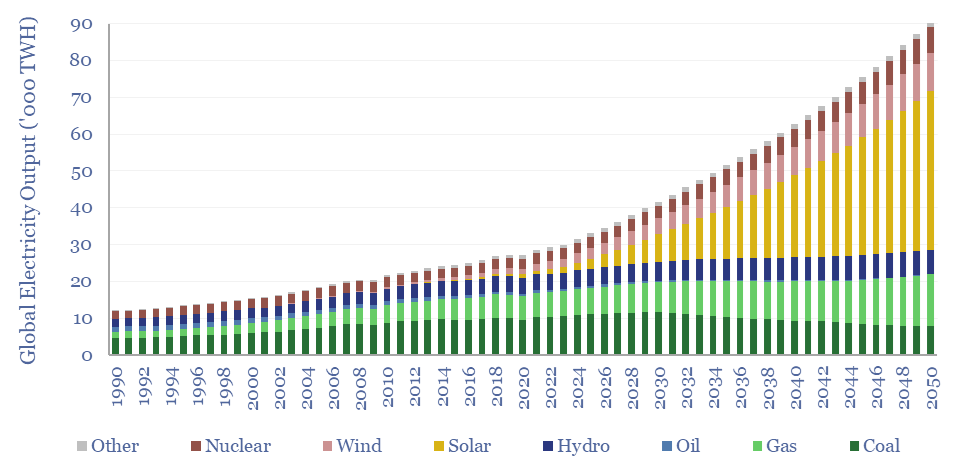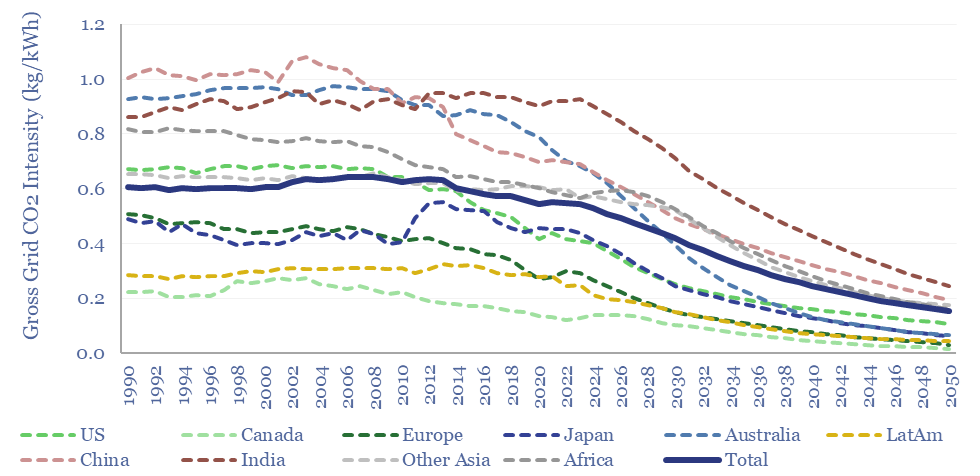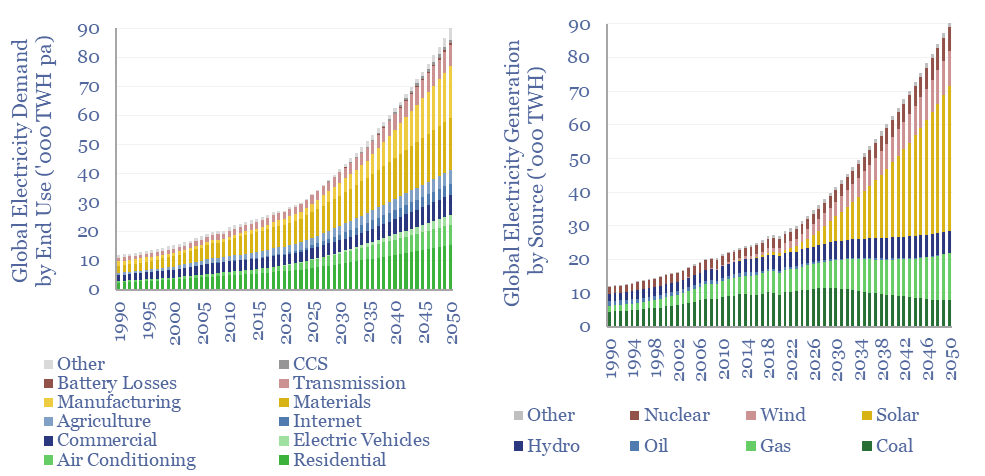Global electricity supply-demand is disaggregated in this data-file, by source, by use, by region, from 1990 to 2050, triangulating across all of our other models in the energy transition, and culminating in over 50 fascinating charts, which can be viewed in this data-file. Global electricity demand rises 3x by 2050 in our outlook.
Global electricity demand stood at 30,000 TWH pa in 2023, equivalent to 37.5% of global useful energy consumption. The breakdown is 40% industrial, 25% residential, 17.5% commercial, 6% agriculture, as disaggregated by region in the data-file.
Global electricity demand surpasses 90,000 TWH by 2050, in our outlook, which effectively means that 100% of all net growth in global useful energy consumption through 2050 is electricity demand growth.
Total electricity demand is seen growing at a 4% CAGR through 2050, of which the largest contributors are in new energies areas such as electric vehicles, CCS and within batteries. Largest growth in absolute terms, are in producing metals and materials for the energy transition and in demand-side technologies unlocked by solar.

Rising living standards are the biggest driver of the growth. For example, residential electricity consumption is currently 2.4 MWH pp pa in the developed world, and just 0.7 MWH pp pa in the emerging world, which still only rises to 1.4 MWH pp pa by 2050 on our numbers, or around half the level in the developed world today.

Global electricity generation grows by 3x by 2050, including a 25x ramp for solar, 5x for wind, 2x for gas, 2.5x for nuclear and 1.5x for hydro, while coal-fired power falls by 30%. This outlook sees wind and solar ramping to 60% of all global electricity by 2050, stretching their economic limit. These data are all broken out by region on the Generation tab.

Electricity generation from gas does need to rise, even with this large renewables build-out, in order to displace coal. Our numbers have gas consumption for power generation rising from 150bcfd in 2023 to 300bcfd by 2050, which also boosts demand for gas turbines. Fuel use for coal, gas and oil, by region, and over time, are broken out on the ShareOfCommodities Tab.

The CO2 intensity of global electricity generation falls from 0.54 kg/kWh today to 0.15 kg/kWh by 2050 on these numbers, ranging from <0.1 kg/kWh in the developed world to 0.2 kg/kWh in the emerging world. These numbers are on a gross basis. Capturing and offsetting the CO2 would be necessary to reach Net Zero. These calculations are shown by region and by contributor on the CO2 tab.

Global electricity-supply-demand is broken down by source, by use, by region and over time, across the entire data-file, which draws from all of our other energy transition research and models.
